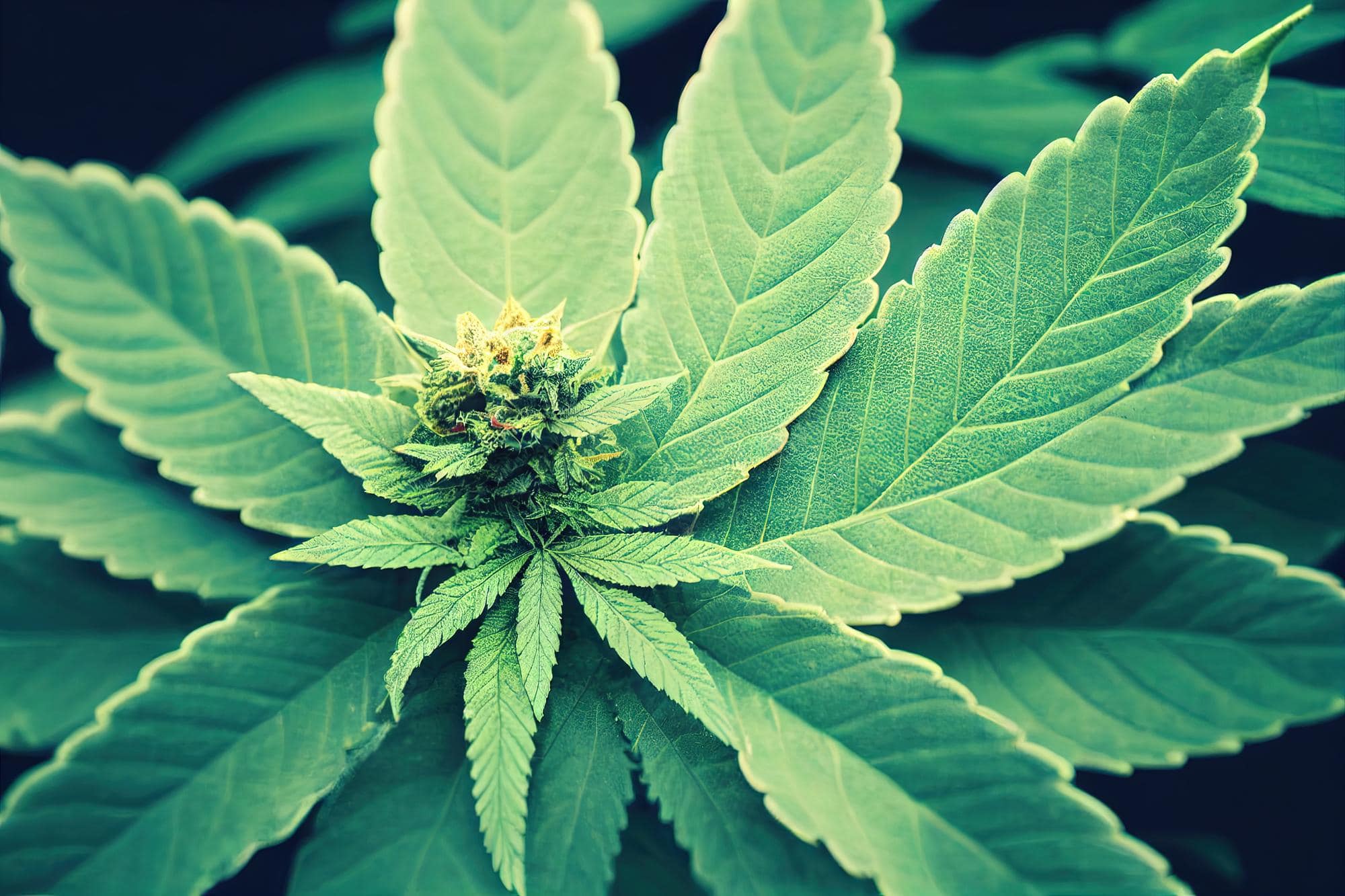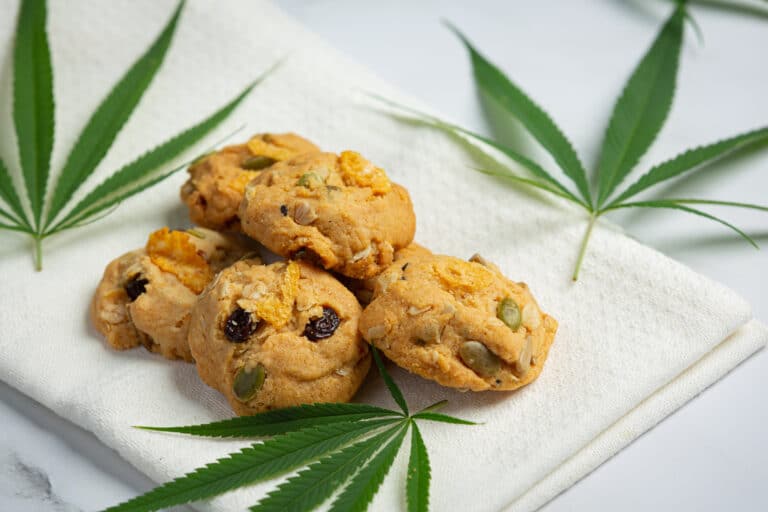Cannabis Classification: Hallucinogens, Stimulants, & Depressants
by Haley Mills · February 6, 2023
Confused if cannabis is a hallucinogen, stimulant, or depressant? Find out here! Learn the truth about classifying cannabis and understand the effects it has on your body.

Confused if cannabis is a hallucinogen, stimulant, or depressant? Find out here! Learn the truth about classifying cannabis and understand the effects of marijuana on your body.
The Effects of Medical Cannabis
The effects of cannabis vary from person to person, depending on an individual’s biology and cannabinoid receptor type. Not everyone experiences the same results when consuming cannabinoids, and the intensity of those psychological and physical effects also varies. Some people feel relaxed and happy after cannabinoid consumption, while others may feel sleepy or tired. That can depend on the strain as well.
It is important to remember that marijuana use should be approached cautiously, as it can have adverse side effects, especially when consumed in high doses or with other prescription drugs. If you are trying cannabis or its cannabinoid chemicals, it is best to speak with a healthcare professional who can help you determine which strain and dosage would be best for you.
When recreationally, cannabis can produce euphoria, relaxation, and altered sensory perception. Some cannabinoids are more likely to cause these effects than others. THC is most likely to cause euphoria, relaxation, and increased appetite.
CBD is often the choice for people looking to manage chronic pain, nausea, anxiety, and depression without the psychoactive effects brought on by THC. Read below to learn more about cannabis and its various qualities.
Which type of drug is weed?
Weed is known for offering a range of various experiences. The mental and physical effects experienced when consuming cannabis depend on certain factors, such as the plant’s chemical profile or composition of cannabinoids and terpenes.
Drugs are categorized based on their unique properties. Each drug typically falls into one of four categories:
- Depressants are drugs that slow down brain function. Examples include alcohol and Xanax.
- Stimulants elevate the mood and enhance alertness and energy levels. They can be highly addictive and cause paranoia over time. Examples include cocaine, methamphetamine, and Adderall.
- Hallucinogens are a drug that changes your perception of reality by affecting the communication of nerve cells in the brain. Examples include LSD, mushrooms, and MDMA.
- Opiates are potent painkillers that quickly produce euphoric feelings. They are highly addictive and can have lasting adverse effects on the brain. Examples include illicit drugs like heroin, morphine, and prescription painkillers like opioids.
The effects of smoking cannabis can vary widely depending on the individual, strain choice, consumption method, and type of weed. Technically, weed can be classified as a depressant, stimulant, or hallucinogen, but never an opiate.
It’s important to note that mixing cannabis with certain drugs can cause an increased risk of significant reactions such as low blood pressure, confusion, fatigue, nausea, damage to the central nervous system, and more. Especially in younger users, there is also the potential to develop signs of drug abuse or marijuana use disorder, so weed should be taken seriously and used appropriately even alone.
Cannabis as a Hallucinogen
While weed hallucinations are possible, they rarely happen among cannabis users. Hallucinogens are substances that alter your perception of reality, either through sensory, visual, or auditory perception.
While hallucinations are false perceptions of objects, events, or senses, it is not paranoia, which involves a mistaken idea accompanied by suspicion. A hallucination can make you see a person as an animal, while paranoia can have you thinking a person is trying to harm you.
Hallucinogens can cause the following temporary effects:
- altered sense of time
- decreased motor functions
- increased heart rate
- nausea
- dry mouth
- disassociation
Weed can have these short-term effects, which is why many people classify them as hallucinogens. Over time, hallucinogens can lead to speech issues, memory loss, anxiety, or depression, so managing psychoactive drug dosage properly is essential.
Cannabis as a Stimulant
Stimulants increase the heart rate and blood pressure, causing rapid breathing in some people. They can also improve mood, particularly immediately after consumption. Stimulants are the opposite of depressants; they make you alert, energetic, and focused.
Stimulants can have adverse effects, including:
- increased body temperature
- paranoia
- irregular heartbeat
- anxiety
- seizures
- heart failure
Cannabis carries fewer risks than most stimulants. For example, methamphetamine and cocaine are highly addictive drugs that can adversely affect the brain and body. However, you can eventually become dependent on it for its uplifting effects, and if you smoke cannabis, it can lead to respiratory issues.
Cannabis as a Depressant
Depressants affect the nervous system and slow brain function, which can help to calm nerves and relax muscle tension. In states that have legalized marijuana, depressants can help to treat several medical conditions, including insomnia, anxiety, arthritis, PTSD, muscle spasms, and more.
However, depressants can also have temporary adverse effects, such as:
- nausea
- confusion
- decreased motor function
- low blood pressure
- slowed breathing
- slurred speech
- lightheadedness
- blurred vision
- short-term memory loss
While depressants are generally less addictive than other drugs, some carry a higher risk of addiction. A person can develop a tolerance to depressants, including weed, meaning you’ll need more to feel the effects from medical or recreational cannabis.
Strains with Stimulating Qualities
These three strains are known by medical marijuana users to be uplifting, promoting health brain function, and increase alertness and creativity.
Green Crack
This popular Sativa strain called Green Crack has become highly marketable recently. Green Crack originated in Ohio but became famous as Green Kush before Snoop Dogg renamed it; it is a sweet and earthy cannabis bud.
The rapper credits the Green Crack strain brand name for its light, energetic qualities and how its uplifting cerebral effect makes you feel. Due to the euphoric feeling provided, it’s a good one to treat mental health conditions like depression and PTSD.
Durban Poison
Durban Poison originated from Durban, a South African port city, and is sold by Dutch Passion Seed Company. It typically has an impressive nineteen percent THC and one percent CBD. This particular strain is a pure Sativa, which makes excellent parent strains.
These south African seeds produce an herbal flavor and aroma with hints of pine and sage. Durban Poison’s buds have many trichomes. Durban Poison is an excellent Sativa strain for edibles, promotes creative qualities, and provides better focus than many other strains.
Sour Diesel
Sour Diesel is one of the most aromatic marijuana strains of all time. This particular strain has a unique and powerful odor of skunk, diesel gas, and lemon. Sour Diesel can leave you feeling uplifted and happy after just a couple of hits, making it an ideal choice in the marijuana world for treating mood disorders.
Strains with Depressant Qualities
While “is weed a depressant” is not a one size fit all question, some strains certainly can have more relaxing and calming qualities.
Cannatonic
Cannatonic was created by Resin Seeds in Spain and later cross-bred in US government labs. It is known as the CBD Queen with 9 percent CBD and 4 percent THC and is a cross of MK Ultra and G13 Haze that has won many cannabis cup awards.
This balanced 50/50 Hybrid has a sweet citrus flavor while the aroma is earthy. It has an average of eleven weeks of flowering time indoors and is used to treat muscle spasms, migraines, fatigue, and chronic pain. This cannabis Sativa plant produces a powerful, uplifting, and energetic high, leaving you incredibly relaxed and content.
OG Kush
OG Kush, also known as “Premium OG,” is a famous strain that was first cultivated in Florida in the 1990s and then crossed with Chemdawg, Lemon Thai, and a strain from the Hindu Kush mountains to create a unique terpene profile. The result boasts an aroma with notes of fuel, skunk, and spice.
This special Kush variety can be enjoyed at any time but is especially good during stressful times due to high THC levels that help relieve headaches and promote body relaxation.
Purple Punch
Purple Punch is an Indica-dominant hybrid crossed between Larry OG and Granddaddy Purple and created by Supernova Gardens seed bank. This heavy hitter is filled with frosty trichomes and smells of grape candy and freshly baked blueberry muffins.
The potency of this strain offers an intense head and body high that’s sure to hit you with a one two punch, often resulting in couch lock. Purple Punch is best used at night, and its physical effects can help manage nausea, stress, body aches, and insomnia.
Strains with Hallucinogenic Qualities
Weed doesn’t make you trip like other illicit substances such as mushrooms or acid, but certain medical marijuana strains can offer mild hallucinogenic effects similar to psychoactive drugs.
Amnesia Haze
Amnesia Haze is a Sativa-dominant hybrid strain known to be uplifting and mood-boosting. This strain by Soma Seeds has won a High Times cannabis cup and can be rare to find than other Haze strains. Amnesia is a potent Haze strain well-known in cannabis for its unique aroma and flavor profile. It has a moderate to high THC level and produces a nice-sized yield.
Wedding Cake
Wedding Cake is a heavy hitter that can simultaneously produce intense head high and total body relaxation. Consumer reviews say that smoking the pink cookies strain will leave you feeling relaxed, happy, and creative. It’s a great strain to try before a game night at the house due to its long-lasting chronic pain relief and uplifting mind effects.
Headband
Headband is a popular Indica-dominant strain known to help with mood disorders, anxiety, and depression. This potent strain is the result of a cross between OG Kush and Sour Diesel. Headband weed can cause intense bursts of excitement and profound calmness, helping relieve tension and stress.
In Conclusion
Now that you know cannabis can be classified as a stimulant, hallucinogen, or depressant in various cases, you can probably understand the importance of the source of your weed as well as the strain choice. We recommend discussing your options with an experienced budtender or MMJ provider, but hopefully, the nine strains provided above will get you started on your journey with cannabis use.
Last Updated: August 8, 2024
Get Approved for Your Medical Marijuana Card in Minutes!

Get Your Medical Card
Connect with a licensed physician online in minutes

Like This Article?
Share with your friends
Table of Contents
Keep Reading
-
Managing Emotions With Marijuana: Risks & Benefits
Discover the pros and cons of managing emotions with marijuana. Click to explore the risks and benefits.
-
Using Medical Marijuana for Pain Relief in PA: What You Need to Know
Find out how medical marijuana can help with pain relief in PA. Learn about different strains, dosing, and how to get started.
-
How to Recover from Edibles
If you’ve overdone it on the edibles, don’t worry. We’ve got you covered with tips on how to recover quickly and get back to enjoying your high.



